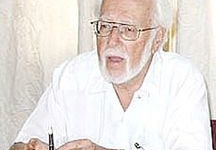CJ was duty bound to determine whether continued participation by Mingo would undermine public confidence in the process
BY: KAISREE S. CHATARPAUL
In an attempt to determine the cause of the predicament the country has fallen into post the March 2, 2020 election, it is necessary to return to March 4/5 when, with the exception of Region 4, the ballots of the nine other Regions were completely counted and tabulated without alarm.
During the tabulation process of the Region 4 votes, however, Returning Officer, Clairmont Mingo, devised a plot in which he ignored the statutorily mandated use of the Statements of Poll (SOPs), made use of an unknown and unidentified spreadsheet with fictitious numbers used to significantly inflate votes in favour of APNU/AFC and deflate the numbers for the PPP/C. Mingo’s amateur but unlawful scam was intended to ensure an APNU/AFC victory in Region 4 and consequently a national victory.
Mingo’s fraud was so open and brazen that it led OAS Observer Mission Chief, Bruce Golding, to publicly state that he had “never seen a more transparent attempt to alter the results of an elections”.
A judicial review challenge to Mingo’s manipulated tabulation and fraudulent declaration was heard by Chief Justice, Roxane George-Wiltshire who, after ruling that the High Court had jurisdiction to hear the case upon the basis of its supervisory powers over a public body exercising public functions, allowed the application and set aside Mingo’s tabulation and declaration. As well, she referred the matter back for the tabulation to be conducted in accordance with the provisions of the Representation of the People Act. Consequently, the matter was sent back to Returning Officer Mingo who, in a somewhat different machination, contemptuously used similar fictional numbers and made the same fraudulent declaration which continues to be in the possession of Gecom, although it then ordered a recount.
The looming uncertainty of the conclusion of the March 2, 2020 elections must now be assessed in terms of the High Court’s review of the allegedly anomalous tabulation of the Region 4 votes. In upholding the PPP/C’s application for judicial review, Madam Chief Justice effectively found that Clairmont Mingo, a public body official, failed to follow statutory stipulations and arrogated to himself powers which he did not possess to make decisions for the benefit of one side (APNU/AFC).
Consequent upon her finding, the Chief Justice connectedly set aside Mingo’s mythical manipulations and injuncted Gecom from making use of same, while simultaneously ordering that the tabulation/declaration for Region 4 must be done on the basis of the SOPs. And the rest is history!
But history apart, a significant unanswered question arose out of the High Court’s decision: why didn’t the Chief Justice order that the matter of the Region 4 tabulation be returned to Gecom for continuation/completion by a different official i.e. an official other than Mingo eg. A Deputy Returning Officer?
You see, the role of a judicial review judge is not limited to determining whether there has been compliance with the statute so as to trigger the legitimate exercise of power: the law is also concerned to ensure that administrative power, when it is exercisable, is used only in legally acceptable ways and as such, the courts have developed a range of principles with which decision makers must comply when exercising statutory power.
The High Court’s supervisory jurisdiction over decisions of administrative bodies such as Gecom is governed by established principles developed under the concept of administrative law: one such principle is the requirement of natural justice which imposes upon decision makers a duty to act fairly. Fairness, whether procedural or substantive, involves the absence of bias. The presence of actual bias means a lack of fairness and a process void ab initio.
Based on the Affidavit evidence before her, the learned acting Chief Justice found that Returning Officer, Mingo, failed to comply with the provisions of a statute under which he was empowered to conduct the tabulation process of the Region 4 votes. But did the Honourable Chief Justice, apart from her finding of statutory non-compliance on the part of Mingo, a Gecom official, go on to assess the impact of Mingo’s exercise of his power in a legally unacceptable way? Put differently, did the evidence before the Court reveal that Mingo’s manipulation of the tabulation process of Region 4 votes was influenced by bias or unfairness on the part of Mingo?
It may be difficult to legally conclude that Mingo’s nefarious actions were influenced by actual bias, in which case the law requires him to be automatically disqualified from further participating in the process. However, it is respectfully submitted that, as a matter of judicial responsibility, Madam Chief Justice was duty bound to assess the evidence before her in order to determine whether the continued participation by Mingo in the process would undermine public confidence in its fairness.
In this regard, the Chief Justice could have obtained judicial guidance from the decision of the House of Lords in Porter J. Magill [2002] AC 357 which firmly established the test for identifying the disqualifying level of apparent bias of a decision maker. Following Porter, courts must now ask themselves: whether the circumstances would lead a fair-minded and informed observer to conclude that there was a real possibility of bias.
It is not apparent that Chief Justice George-Wiltshire asked herself the question advocated for the courts by the House of Lords in Porter, nor does it appear that Her Ladyship judicially dealt with the issue of public confidence in the fairness of the process she was empowered to judicially review.
The Court’s disposition of the Judicial Review Application without a determination of the issue of reasonable apprehension of bias on the part of Clairmont Mingo, a Gecom official, coupled with the absence of a Court Order prohibiting Mingo’s continued participation in the tabulation/ declaration process of the Region 4 votes, in my respectful view, amounted to an abdication of judicial responsibility.
Had the learned Chief Justice not abdicated her judicial duty as aforesaid, I am of the humble and respectful opinion that, based upon the evidence upon which she found statutory non-compliance by Mingo, at the very least, she would have similarly found a reasonable apprehension of bias on the part of Clairmont Mingo. This breach of a rule of natural justice would impose a judicial duty to prohibit Mingo from further participating in the Region 4 tabulation.
Had the High Court Ordered Gecom to continue the Region 4 tabulation process without the further involvement of Clairmont Mingo, the results of the March 2, 2020 election might have been long declared. While this conclusion might be dismissed by some as wishful thinking, law abiding citizens must now question the veracity of the statement that “it remains the sacred duty of the Courts to secure the fundamental liberties of the citizens against arbitrary exercise of power”.
The judiciary in democratic societies has traditionally tasked itself to fiercely defend and uphold the fundamental rights of citizens. When everything else failed there was hope that the judiciary would never fail its citizens. Did acting Chief Justice, Roxane George-Wiltshire, give any hope to Guyanese citizens with her disposition of the Judicial Review Application in the so-called “Mingo magic” tabulation/declaration of Region 4 votes in the March 2020 elections in Guyana? I respectfully think not!






















